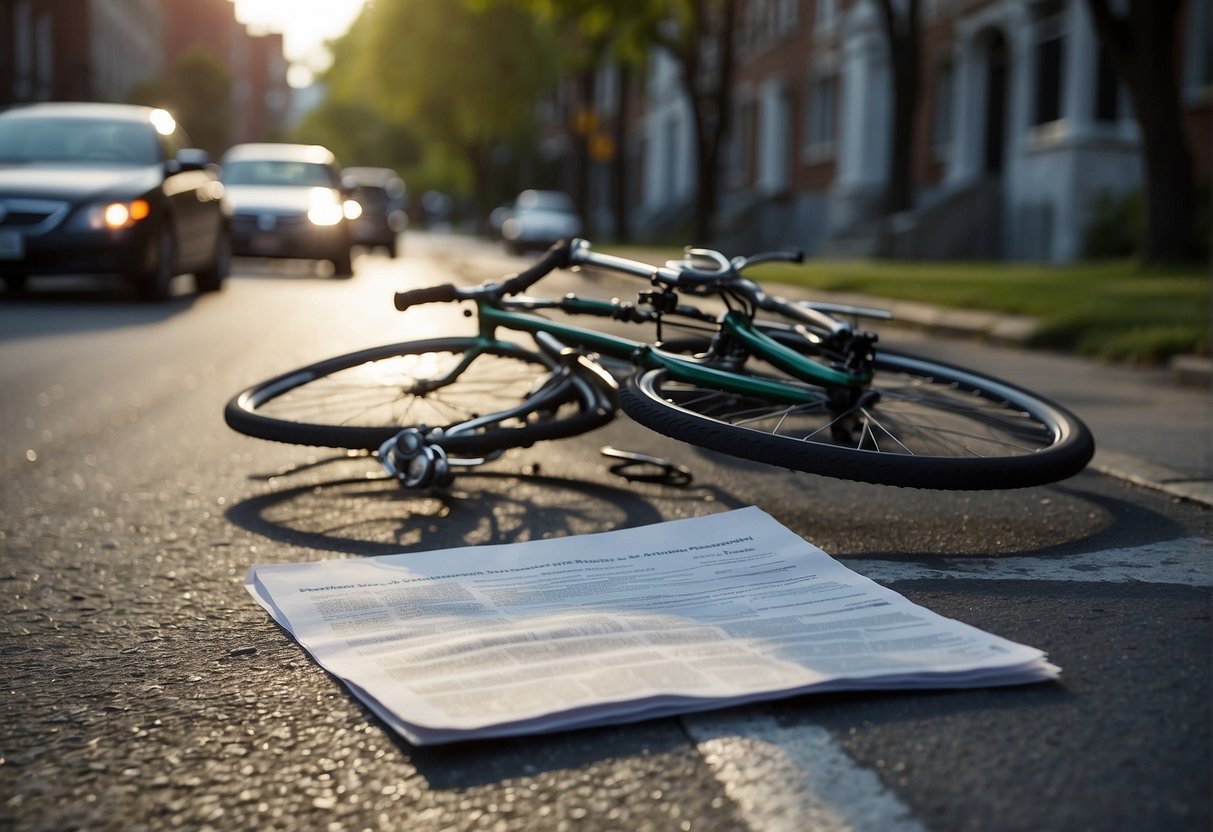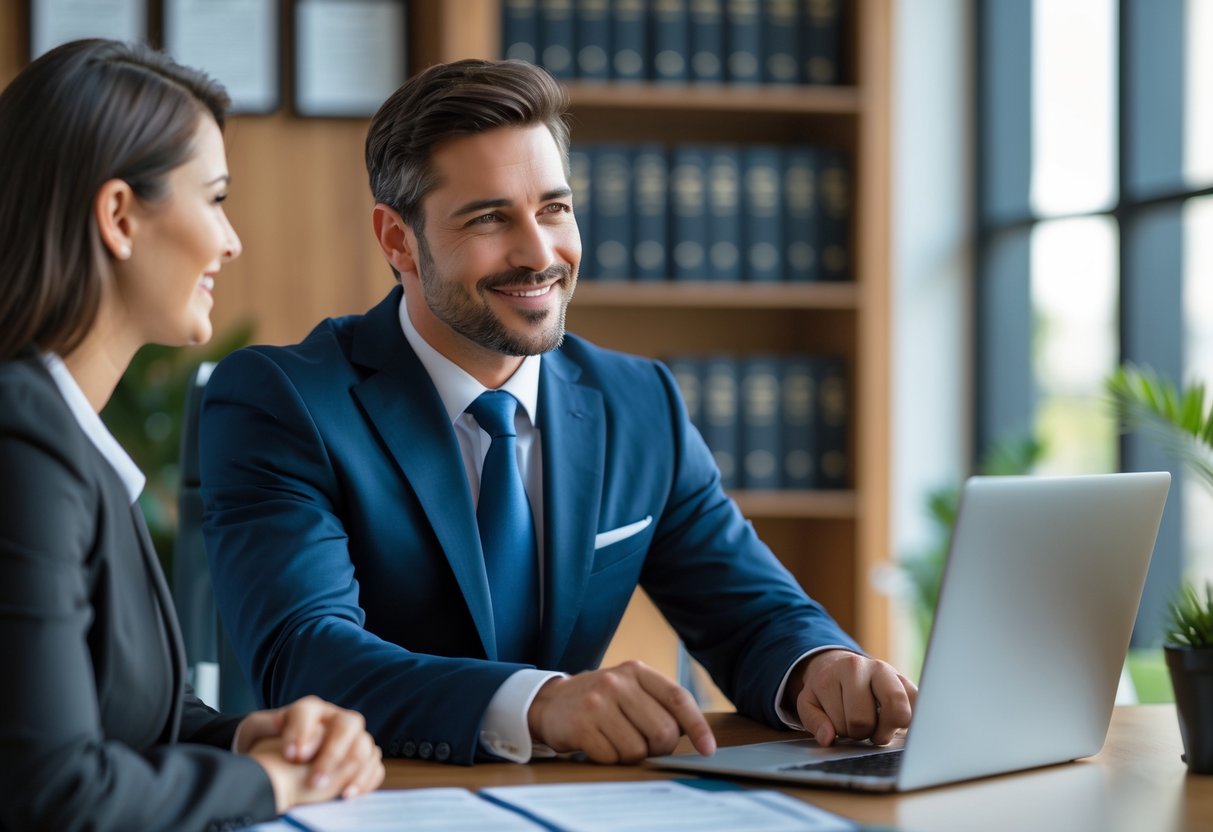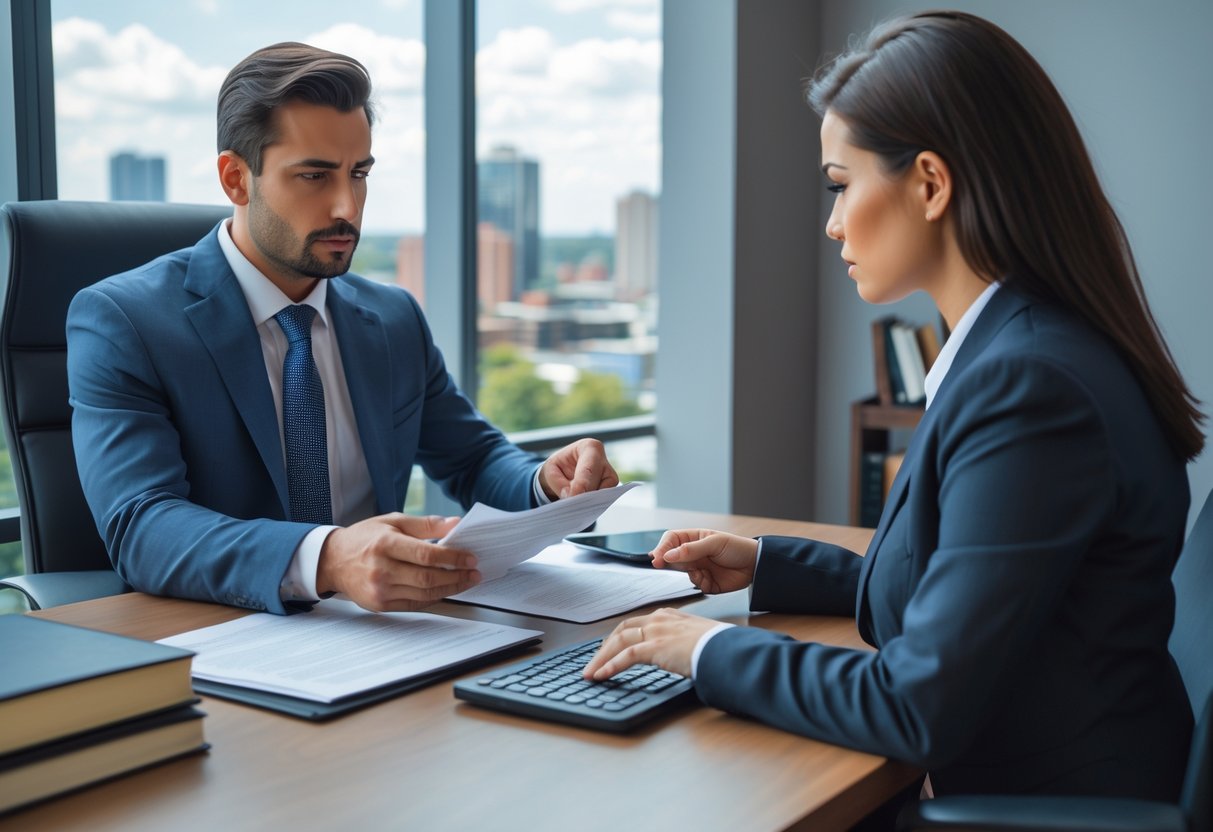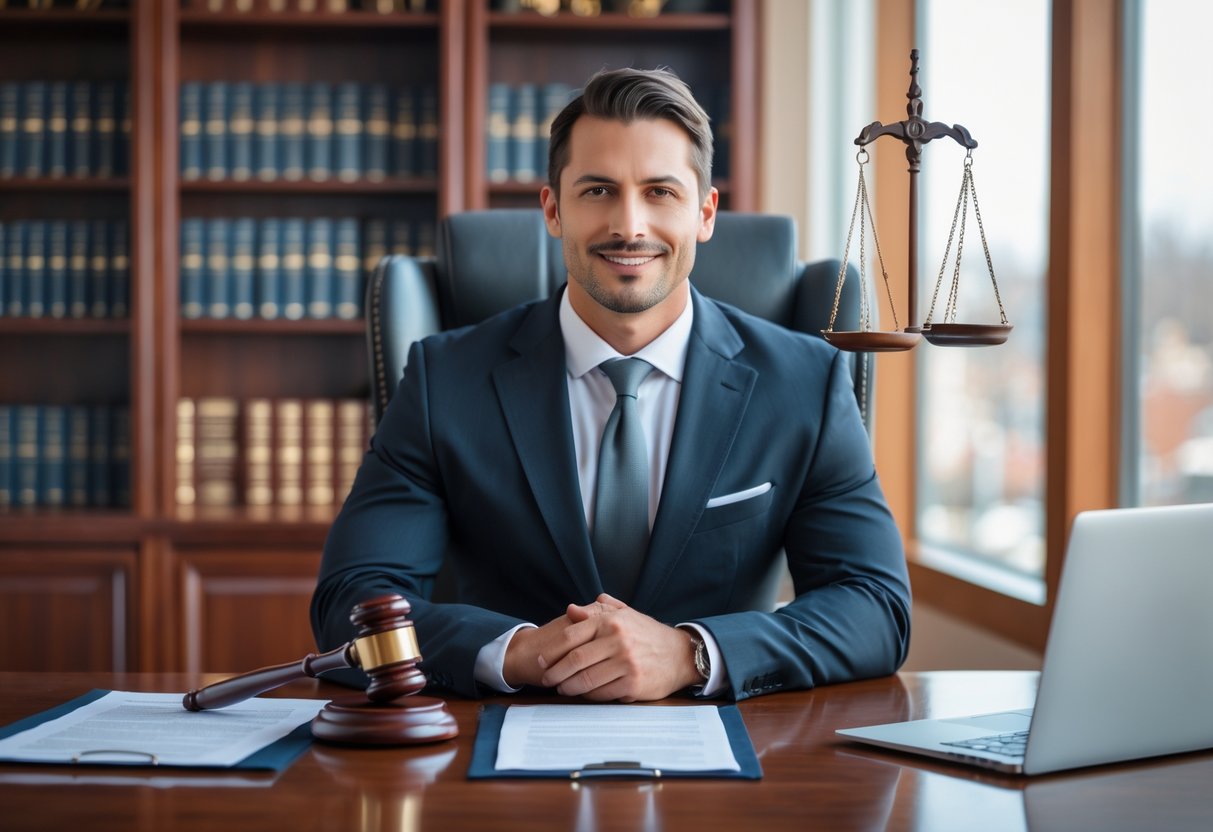Understanding Bicycle and Pedestrian Accident Law

We need to grasp the legal concepts that apply to bicycle and pedestrian accidents to effectively navigate these cases. Our understanding must encompass the specific legal frameworks and principles that determine how injured parties can seek justice and compensation following accidents.
Definition and Scope of Personal Injury Law
Personal injury law encompasses legal remedies and defenses involved in civil lawsuits brought as a result of wrongful conduct. Specifically, in the context of bicycle accidents and pedestrians, this area of law addresses the harm caused to individuals as a result of someone else’s negligence or intentional act.
Roles and Responsibilities in Traffic
Every user of the road, including bicyclists and pedestrians, has specified duties under traffic rules and laws. We refer to this as the duty of care—a legal obligation to behave with a certain level of caution and consideration while using roads to prevent harm to others.
Liability and Negligence in Accidents
Liability in bicycle and pedestrian accidents typically hinges on negligence—the failure to exercise a reasonable standard of care. Establishing liability involves demonstrating:
- A duty of care existed.
- There was a breach of duty.
- The breach caused the incident (causation).
- Actual harm or damage occurred as a result.
Determining Fault in Collision Incidents
Determining who is at fault in a collision involving bicycles and pedestrians requires a thorough understanding of related traffic laws. It involves dissecting the event and evaluating the actions of everyone involved, considering if there were any violations of traffic rules, like failing to yield right of way, which demonstrate negligence or breach of the expected duty of care.
Legal Rights and Recourse After an Accident

Being involved in a bicycle or pedestrian accident can be a frightening experience, but knowing your legal rights and the steps for recourse is crucial. We aim to inform you about the necessary actions you should take post-accident to protect your legal rights.
Protecting Your Legal Rights Post-Accident
It is vital that we safeguard our rights immediately after an accident. First, ensure your safety and seek medical attention if needed. Then, gather evidence at the scene, such as photos of injuries, damages, and the area where the accident occurred. Obtain contact information from witnesses and involved parties. It’s also important to notify your insurance company about the incident, without discussing fault or specifics until you have legal representation.
Steps to Take Following an Accident
Once you’ve taken immediate action, consider the following steps:
- Document the Incident: Write down everything you remember about the accident as soon as possible.
- Seek Medical Attention: Even if you don’t feel injured, a medical professional can assess you. Medical records also serve as important evidence.
- Consult a Legal Professional: An attorney who specializes in accidents involving cyclists and pedestrians can help you understand your options and guide you through the legal process.
Importance of a Police Report
Always call the police to the scene of the accident. A police report is a critical document that:
- Confirms the Incident: Provides an official record that the accident occurred.
- Records Statements: Contains initial statements from those involved and any witnesses, which can be integral in legal proceedings.
- Details the Scene: Includes the officer’s observations about weather, road conditions, and any violations of law.
Legal Options for Injured Cyclists and Pedestrians
If you’re injured, several legal options are available:
- Personal Injury Claim: You may file a claim against the party at fault for damages.
- No-Fault Insurance Claims: Depending on your state, you might file a claim with your own insurance company.
- Civil Lawsuit: If necessary, you can pursue a lawsuit to recover damages for injuries and losses.
Damages often include medical expenses, lost wages, and compensation for pain and suffering. Working with a lawyer will help you navigate the complexities of pursuing these claims and lawsuits effectively.
The Compensation Claim Process

When pursuing compensation after a bicycle or pedestrian accident, understanding the claim process is essential. We’ll examine how to file a personal injury claim, the role of insurance companies, the distinction between settlements and trials, and the method of calculating damages and compensation.
Filing a Personal Injury Claim
To recover damages after an accident, we must first file a personal injury claim. This process begins by gathering evidence such as accident reports, witness statements, medical records, and any other documentation supporting the claim. It’s crucial we establish negligence on the part of the other party involved in the accident. We must file the claim within the statute of limitations, which varies by state.
Filing Steps:
- Collect Evidence: Photos, accident reports, witness contacts.
- Confirm Statute of Limitations: Ensure filing before the deadline.
- Submit Claim: Provide all necessary documents to start the claim.
Dealing with Insurance Companies
Insurance companies play a significant role in the compensation process. We must report the accident to our insurance provider, who will assess the claim and negotiate with the other party’s insurer. It’s important to communicate effectively with the insurance adjuster but to also be cautious about the information shared, as it can affect the settlement offer.
Key points when dealing with insurers:
- Documentation: Keep a detailed record of all conversations.
- Honesty: Provide accurate information about the incident.
- Professional Help: Consider engaging an attorney to navigate complex negotiations.
Settlement vs. Trial
There are two main paths to obtaining compensation: settlement or going to trial. Settlements are more common, as they are less costly and time-consuming than trials. During negotiations, we aim for a fair settlement to cover all damages, including medical expenses, lost wages, and pain and suffering. If a settlement cannot be reached, we prepare to present our case at trial, where the court will determine the compensation.
Comparison Table:
| Settlement | Trial |
|---|---|
| Usually quicker resolution | Can take months or years |
| Less expensive | More costly due to legal fees |
| Outcome is controlled by parties | Outcome is decided by a judge/jury |
Calculating Damages and Compensation
The final compensation figure considers both economic and non-economic damages. Economic damages have a specific monetary value such as medical bills and lost wages. Non-economic damages, including pain and suffering, are more subjective. In rare cases, punitive damages may be awarded to punish egregious conduct. We calculate these figures to ensure a fair compensation claim that reflects the true cost of the accident’s impact on our lives.
Damages Breakdown:
- Economic Damages: Medical bills, rehabilitation costs, lost income.
- Non-Economic Damages: Pain and suffering, loss of consortium.
- Punitive Damages: Applicable in cases of intentional harm or gross negligence.
Gathering Evidence and Preparing for Legal Action
When we prepare for legal action after a bicycle or pedestrian accident, collecting substantial evidence and documentation is crucial. This enables us to build a robust case to support our claims for damages.
Collecting Key Documentation and Evidence
It’s essential that we promptly gather all available evidence relevant to the accident. This includes obtaining a copy of the police report, medical records, and any available traffic camera footage. These documents serve as the foundation of our case, establishing the facts and circumstances surrounding the accident.
- Police Reports: Request a copy from the local law enforcement agency.
- Medical Records: Secure detailed records of injuries and treatments from healthcare providers.
- Traffic Camera Footage: If accessible, footage can corroborate our version of events.
The Role of Witnesses and Expert Testimony
Witnesses can provide critical information that supports our narrative of the accident. We should obtain contact information and statements from anyone who witnessed the event. Additionally, medical experts can offer testimony about the extent and impact of injuries sustained.
- Witness Statements: Gather names and statements from those present at the scene.
- Medical Expertise: Engage medical experts to interpret injury details.
Reconstruction of the Accident Scene
Reconstruction experts can help us understand how the accident occurred by analyzing the available evidence. Their findings can be a powerful tool in negotiations or at trial.
- Accident Scene Analysis: Use experts to analyze and recreate the sequence of events.
- Evidence Integration: Incorporate physical, photographic, and video evidence to support the reconstruction.
Photos, Medical Bills, and Other Proof
Photographic evidence and documentation of expenses are vital. We need to take photos of the accident scene, injuries, and any property damage. Keeping a meticulous record of all medical bills, treatment receipts, and related expenditures is also necessary for claiming compensation.
- Photographs: Document the scene, injuries, and damage immediately.
- Financial Records: Collect all receipts, invoices, and statements related to the accident.
Hiring Legal Assistance and Representation
When involved in a bicycle or pedestrian accident, securing skilled legal counsel is crucial. We understand that the right attorney can make a significant difference in the outcome of your case.
Choosing the Right Personal Injury Attorney
When searching for a personal injury attorney, we prioritize expertise in bicycle and pedestrian accidents. It’s essential to look for attorneys who have a successful track record in these specific cases. Experience is key, so we consider:
- Years of Practice: We favor attorneys with substantial experience in personal injury law.
- Case Outcomes: We compile a list of past verdicts and settlements to gauge their success rate.
- Focus on Personal Injury: We seek attorneys who specialize in personal injury law rather than general practice lawyers.
How Attorneys Can Strengthen Your Case
Legal counsel plays a vital role in gathering evidence and crafting a compelling argument on our behalf. Here’s how a skilled attorney will proceed:
- Investigation: They’ll meticulously investigate the accident scene and gather necessary evidence.
- Expert Testimonies: They may involve accident reconstruction experts or medical professionals to strengthen our case.
- Negotiation: Their negotiation skills are crucial in securing fair settlements from insurance companies.
Attorney Skills in Maximizing Recovery of Damages
Our objective is to secure maximum compensation for injuries and damages, and this is where the attorney’s skills are pivotal. We look for legal counsel skilled in:
- Calculating Damages: They must accurately estimate current and future losses.
- Articulating Claims: They must convey the implications of our injuries effectively.
- Settlements and Trials: A balanced expertise in both negotiating settlements and presenting cases in court is beneficial.
By focusing on these key areas, we place our trust in legal representatives who can advocate for our rights effectively and guide us through the complex legal processes stemming from bicycle and pedestrian accidents.
Frequently Asked Questions
In this section, we aim to clarify some common concerns regarding the legal proceedings and rights following pedestrian and bicycle accidents.
Who is usually liable in a bicycle and motor vehicle collision?
Typically, the motor vehicle driver is held liable in bicycle collisions if they are found to be negligent, such as breaking traffic laws or driving distracted. However, bicyclists may also be partly responsible if they violate traffic rules.
How is compensation determined for victims of bicycle and pedestrian accidents?
Compensation is usually based on factors such as the severity of the injuries, loss of income, medical expenses, and pain and suffering. Each case is unique, and damages are calculated based on the specific circumstances involved.
What are the legal obligations of a driver in the event of causing a pedestrian accident?
A driver who has caused an accident has the obligation to stop at the scene, render aid if necessary, call emergency services, and exchange information with the pedestrian. Additionally, they must report the accident to law enforcement if it resulted in injuries, death, or significant property damage.
What rights do pedestrians have when involved in a traffic collision?
Pedestrians involved in a traffic collision have the right to seek medical attention, obtain the driver’s contact and insurance information, report the incident to the police, and file a claim for compensation for their injuries and losses.
How should a bicycle accident claim be filed and what evidence is needed?
A claim for a bicycle accident should be filed with the at-fault party’s insurance company. Essential evidence includes a police report, witness statements, medical records, photographs of the scene and injuries, and documentation of expenses incurred due to the accident.
What steps should be taken immediately after a pedestrian is struck by a vehicle?
Following a collision, the pedestrian should seek medical attention, report the incident to the police, document the scene, gather contact information of witnesses, and consult an attorney experienced in personal injury claims to understand their rights and the next legal steps.




